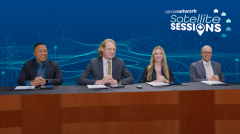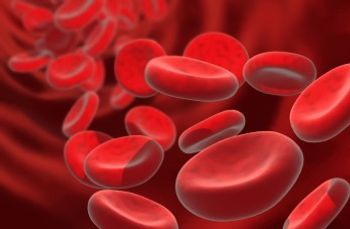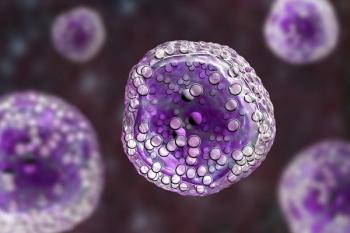
Role of CAR T-cell Therapy in Patients With Relapsed/Refractory Multiple Myeloma
Before closing out their module on relapsed/refractory multiple myeloma, key opinion leaders reflect on the role of CAR T-cell therapy and patient access to care.
Episodes in this series

Transcript:
Andrew P. Dalovisio, MD: I’m going to move on to CAR T [chimeric antigen receptor T-cell therapy] just briefly, in the interest of time. I know we talked about it being the edge of medicine, but what has been your impression of CAR T, at least? I know we talked a little bit about bispecifics. But what’s your impression in general and for myeloma more specifically?
Ryan P. Griffin, MD: My experience has been limited. I haven’t seen any patients with myeloma who’ve gotten CAR T therapy. I’ve had diffuse large B-cell lymphoma status post therapy, but outside of that, [it’s been] limited. And I think, fortunately, or unfortunately, it’ll continue to be limited because of BiTEs [bispecific T-cell engagers] and things like that…. We’ll see, but I think…BiTE therapy will be sort of the preference for most.
Andrew P. Dalovisio, MD: One other thing about the bispecifics, too, is that some of the newer BiTEs that they’re studying, their dosing goes out to every second or third week. And there’s a lot of thought that maybe we don’t need to be dosing the weekly ones weekly. You could start spacing them out to every other week or just treat them until a response and then stop and then just re-treat them when they progress. So, I think we’re going to get a lot better at bispecific administration as we study alternate dosing and things like that, and it will make it easier for the patient. I do think CAR T is attractive to patients who live far away because it’s a 1-and-done. There’s no maintenance anchor. But it is a big commitment. It’s expensive, it’s $500,000. And when you’re talking about 12 months, 24 months of PFS [progression-free survival], that’s a lot of money when you’re looking at macro health economics too.
Kelly Pippin, MD: That was my biggest question. Are we going to be able to get payment models, once they realize the typical PFS rate? Are they going to be keen on this therapy and these sorts of things?
Andrew P. Dalovisio, MD: I think it’s going to be a challenge.
Kelly Pippin, MD: The economics and medicine.
Andrew P. Dalovisio, MD: We had to fight to get things like non-Hodgkin lymphoma CARs where clear economic studies showed it equally saved as much money or even saved money and we were still getting pushback because it’s hard to get insurers to think 5 years down the path. So, I do think that there’s an economic argument that CAR T is hard. But you can also make the argument that if somebody’s on bispecific once a week for 2 years, it’s probably not that cheap either. So, these are all things, as I said, we’re going to have to just figure out. And again, access is a huge problem still for getting CAR T for myeloma.
Kelly Pippin, MD: So, I know for a lot of the leukemias and so forth, the turnaround time to get your CAR Ts back is what, about 4 to 5 weeks?
Andrew P. Dalovisio, MD: Yes. Generally anywhere from 2 to 5 weeks, depending on the patient, the product, things like that. That’s one of the other challenges with CAR T: By the time a person is [at] the fourth line, they’re usually behaving pretty aggressively. Extramedullary disease, they’re oligosecretory, they’re pretty beat up. So they can’t really have 1 or 2 months of just letting the disease ride. And you have to think by this time they’ve blown through everything, so what do you do? I think there’s a lot of thought about using bispecifics and moving into CAR Ts, and things like that. But it is very much a brave new world, as I said, where I don’t think we really know how to necessarily sequence these drugs in a way that’s optimal. But I think we’ll figure it out with time.
Kelly Pippin, MD: After a CAR T, have you thought about doing some type of maintenance regimen or is that not the recommendation at this time?
Andrew P. Dalovisio, MD: It’s being studied right now. But the thought is, if they progress through all these drugs after, what’s going to be the purpose of that? So, I’m not aware of any data right now about maintenance post CAR T.
Transcript edited for clarity.
Newsletter
Stay up to date on recent advances in the multidisciplinary approach to cancer.



















































































